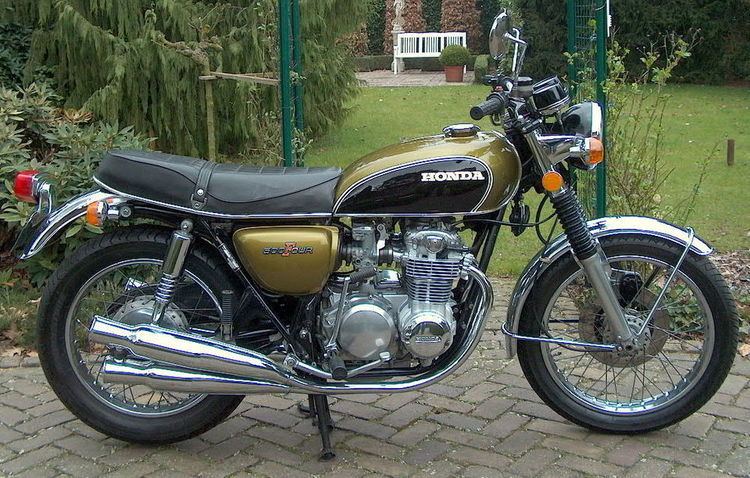Production 1971–1973 Class Standard | ||
 | ||
Also called Honda CB500 Four K model Engine 498 cc (30.4 cu in) air cooled 8-valve SOHC transverse inline-four | ||
The Honda CB500 Four was a motorcycle introduced by Honda early in the 1970s, appearing at the London Racing and Sporting Motorcycle Show in February, 1972. It was similarly styled to the CB750, but smaller and lighter, with the manufacturer's claims of 50 bhp output and a top speed of 115 mph.
Like the earlier CB750 it had a single front hydraulic disc brake, rear drum brake, electric starter, and sohc eight-valve engine. The four-into-four exhaust pipes echoed those of the CB750.
Reviewing the 1972 show models, UK monthly magazine Motorcycle Mechanics described the CB500 as "one of the 'show stealers'. Four cylinders, in-line across the frame, four carburettors and single overhead camshaft motor, coupled to a five-speed gearbox give this 500 cc machine the performance of a 650 twin cylinder bike".
It was deemed a better handling bike than the larger model, although it was still no featherweight at 201 kg (443 lb) (dry).
Unlike the earlier dry sump CB750, the smaller bike has a wet sump engine. Also, the primary drives were different, the CB750 having a duplex chain, while the CB500 had a "Hy-Vo" Morse chain. The CB500 formed the design basis for the Benelli Sei, a 750 cc six-cylinder motorcycle.
Several CB500 machines were entered in the Production TT races on the Isle of Man in the early 1970s. Bill Smith won the 1973 500 cc TT Production race (four laps) riding one, 8.2 seconds ahead of second place Stan Woods mounted on a Suzuki T500 two-stroke, twin.
